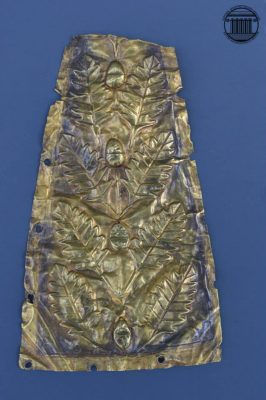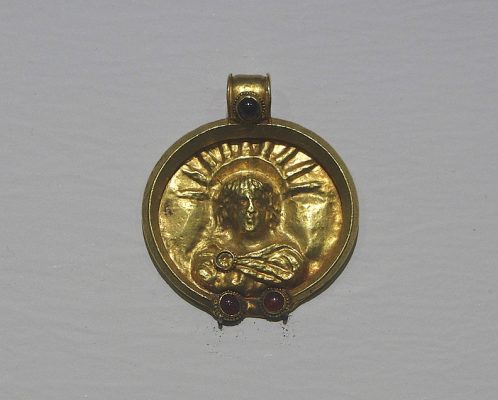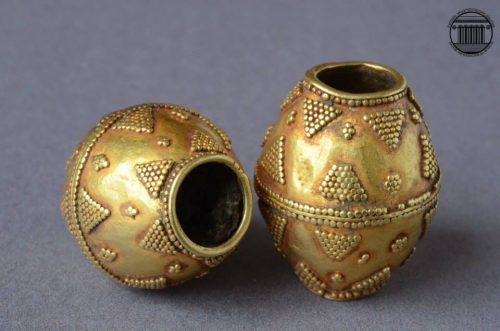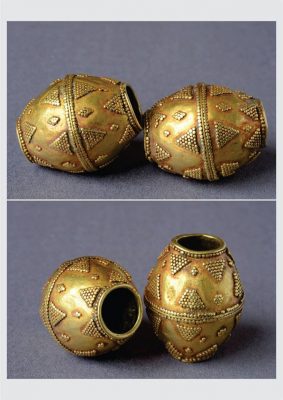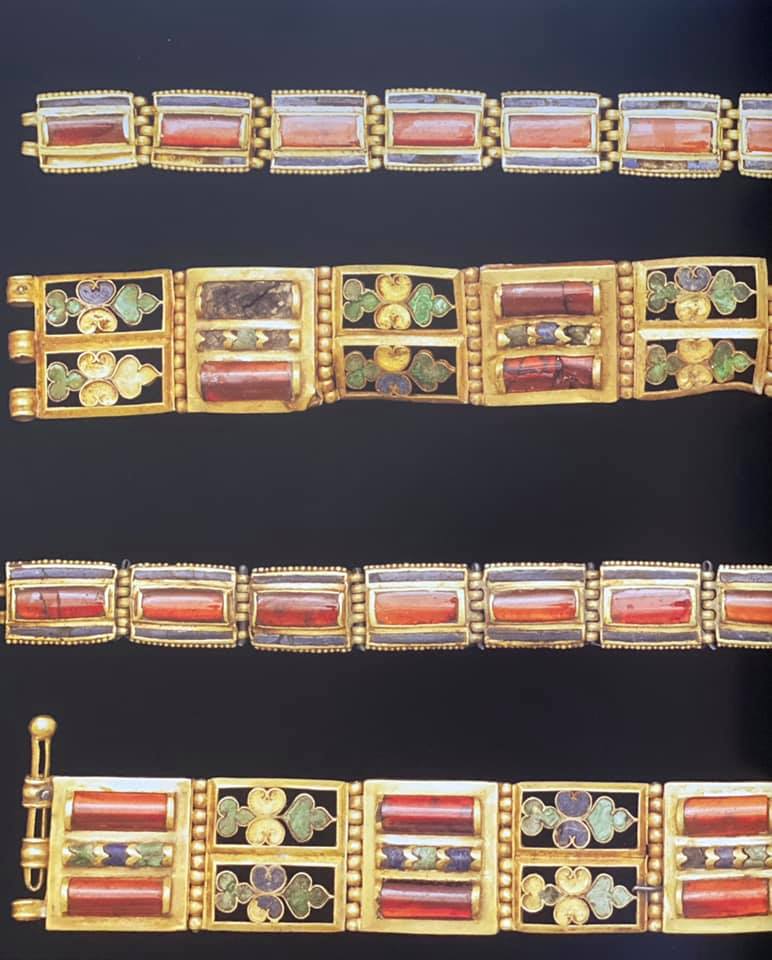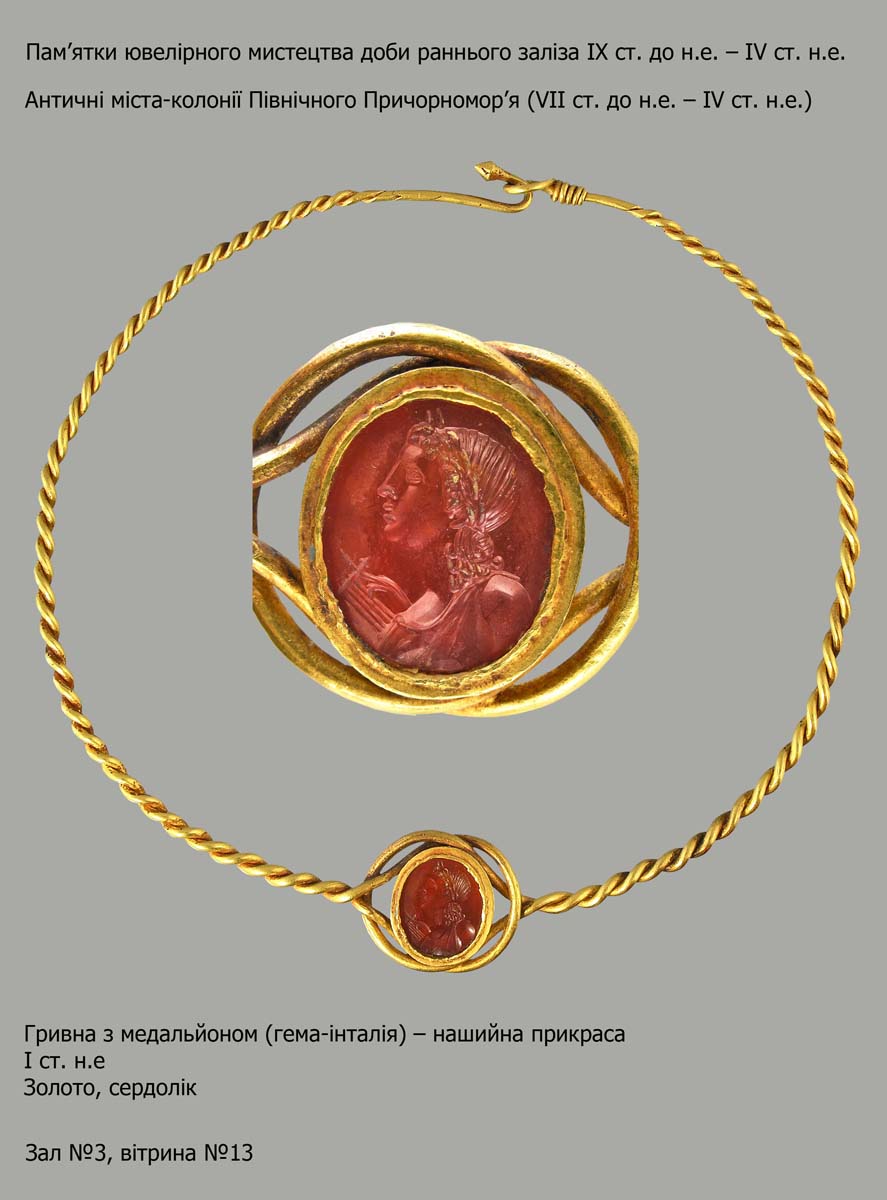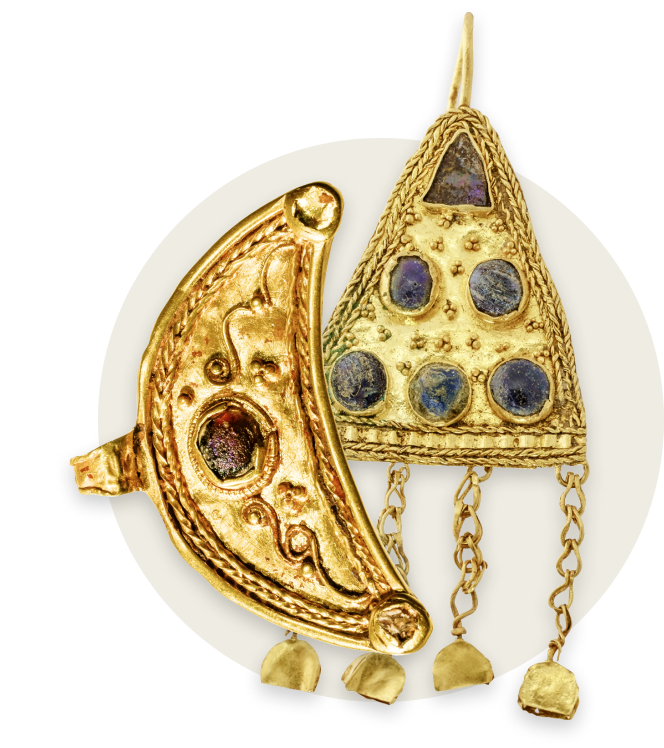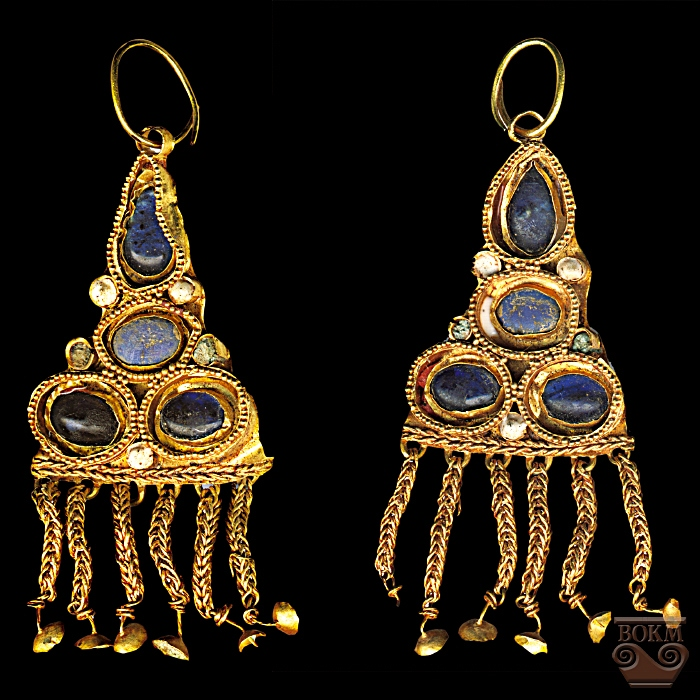For more jewelry from ancient Georgia see >> https://colorsandstones.eu/2020/11/22/georgia/
The Roman time treasure was found in 1974 on the outskirts of Gonio-Apsaros “in a metal vessel” that has not survived. It is dated to the 1st-3rd century.
Mikhail Treister ON JEWELLERY FROM THE FIRST CENTURIES CE COMPLEXES ON THE TERRITORY OF COLCHIS AND SURROUNDING AREASOF THE NORTH-EASTERN BLACK SEA REGION (ABOUT THE SO-CALLED STYLISTIC GROUP “GORGIPPIA — LOO”), 2023
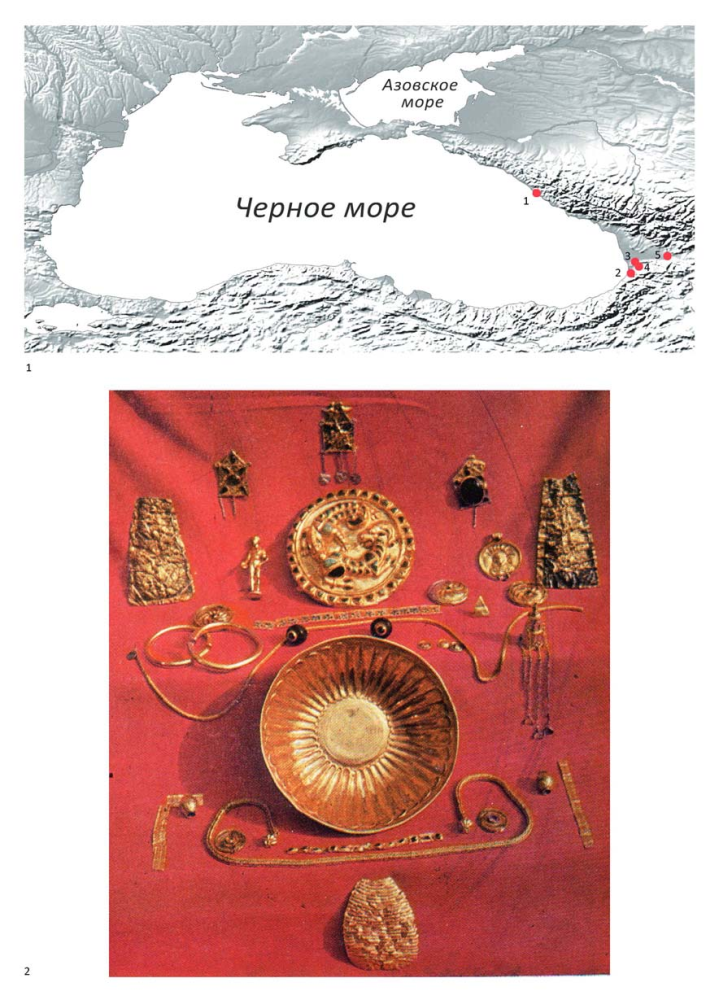
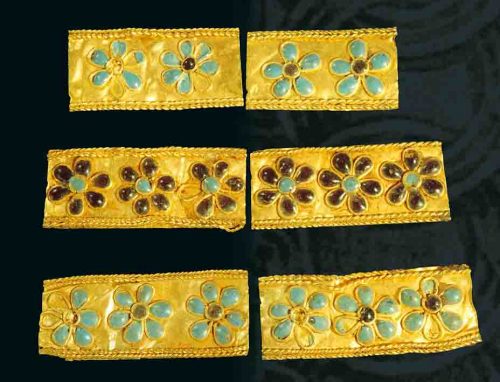
Złoto, niebieska szklana pasta

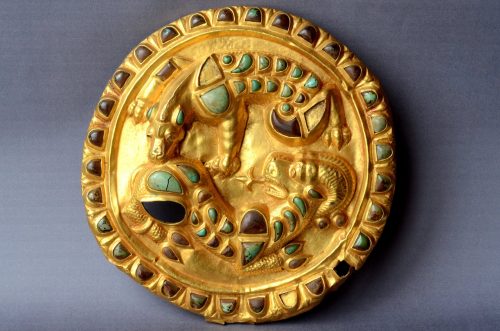
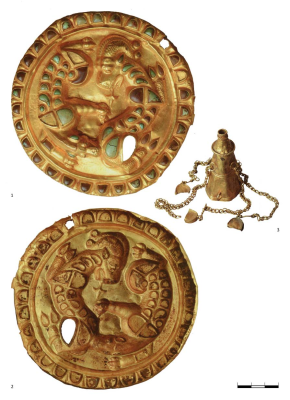
[after Treister M., fig. 3]
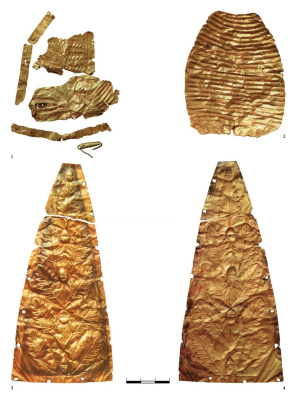
Gonio Treasure. Batumi, Archaeological Museum. Gold appliqués.
1 — inv.-no. unknown; 2 — inv.-no. 20110/5;
3—4 — front and rear sides, inv.-no. 20110/3
[after Treister M., fig. 8]
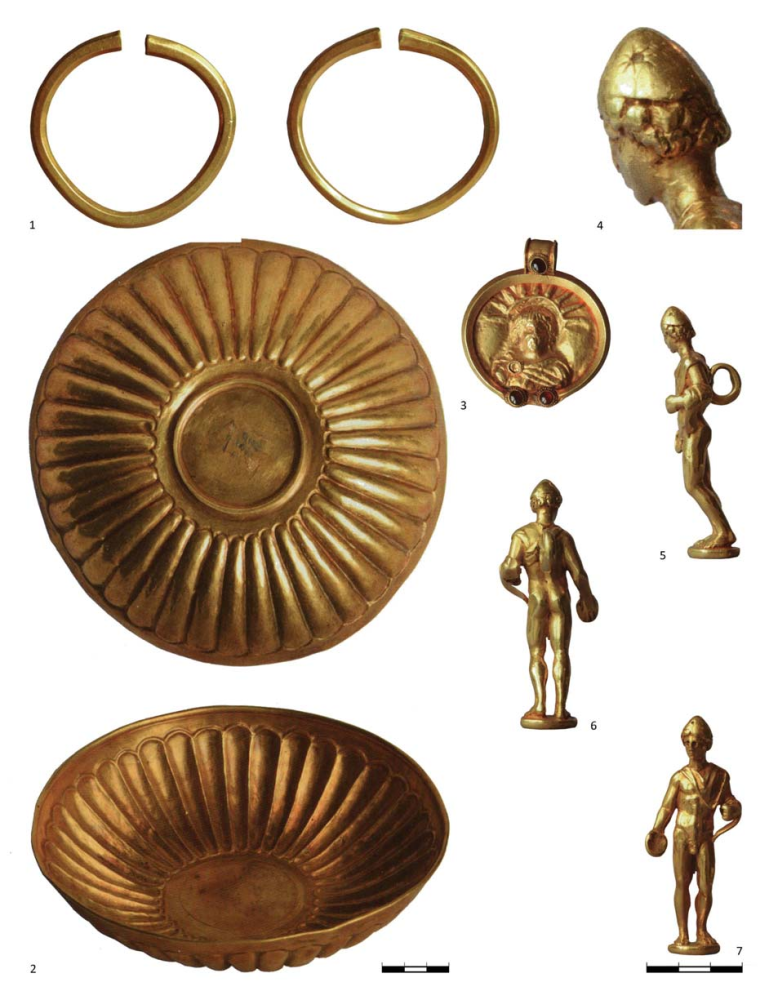
1 — pair of gold bracelets, inv.-nos. 20110/6—7;
2 — gold phiale, inv.-no. 20110/1;
3 — gold medallion, inv.-no. 20110/12;
4—7 — gold statuette-pendant, inv.-no. 20110/10
[after Treister M., fig. 2]
Medallion with an image of god Helios, gold and garnet, 5.4X4.9 cm.
1st-2nd century CE
Treister M.: “Lunula-pendant with a central insert depicting an en face bust of the deity Helios with brooch inserts on his shoulder, and one at the top of the loop and two at the bottom of the frame.”
https://ajaramuseums.ge/en/museums/arch/Pendant%20%201st-2nd%20centuries%20AD
A gold ornament decorated with birds on the mountain slope and an image of a horse rider wearing a Phrygian cap.
Dated to the 2nd-3rd century.

Gonio Treasure. Gold plaques with inlays and pendants. Batumi, Archaeological Museum. 1 — inv.-no. 20110/26; 2 — inv.-no. 20110/17; 3—4 — inv.-nos. 20110/6
[after Treister M., fig. 6]
Treister 2023, str 340: “Plakietki te uważano za ozdobę pasów lub nakryć głowy, ale sądząc po dwóch małych pętelkach znajdujących się na odwrotnej stronie w środku jednej z płytek z otworami wzdłuż osi poziomej, można je raczej uznać za elementy naszyjników.”

1 — pair of gold appliqués, front and rear sides, inv.-no. 20110/20;
2 — four gold appliqués with inlays, inv.-nos. 20110/11—14; 3 — pair of amber pendants with gold cells with inlays, inv.-no. 20110/12;
4 — gold triangular plaque with fixation loop, inv.-no. 20110/23;
5 — pair of gold beads, inv.-no. 20110/18
[after Treister M., fig. 4]

1 — inv.-nos. 20110/8, 19; 62.5X1.5 cm https://ajaramuseums.ge/en/museums/arch/Chain%20%201st%202nd%20centuries%20AD
2 — inv.-no. 20110/9
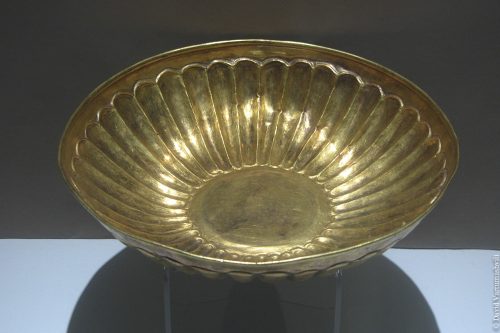
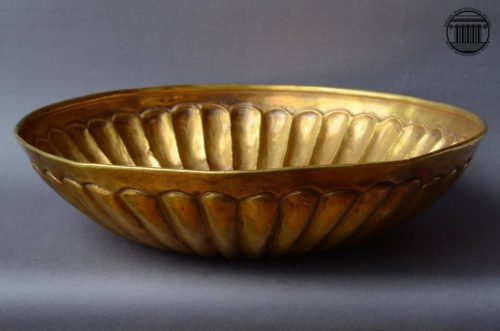
Batumi Archaeological Museum Collection Inv. № 1: 12-105
https://ajaramuseums.ge/en/museums/arch/Cup%20%201st-2nd%C2%A0%20centuries%20AD


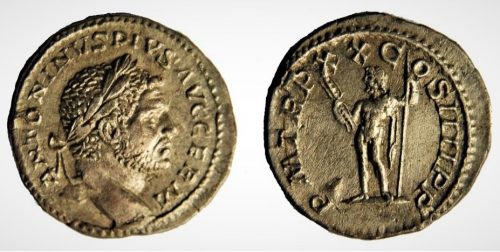
source

“Bronze and silver Roman coins have been discovered by a Polish-Georgian team of archaeologists conducting excavations in the Roman fort of Apsaros, Georgia. According to the discoverers, this could be a small part of a larger treasure.
The oldest coins in the find were minted during the reign of Hadrian (117-138 AD); the youngest come from the last years of the reign of Septimius Severus (beginning of the 3rd century AD).”
Source:
PAP – Science in Poland, Szymon Zdziebłowski
https://naukawpolsce.pl/node/30287
- Recent archaeological finds in Gonio-Apsarus [article]
Amiran Kakhidze, Shota Mamuladze, Nino Inaishvili, Giorgi Tavamaishvili, Merab Khalvashi, Emzar Kakhidze T. Ebralidze, I. Varshalomidze
Collection de l’Institut des Sciences et Techniques de l’Antiquité Année 2002 853 pp. 251-262
https://www.persee.fr - Pichvnari and its environs: 6th c BC – 4th c AD [monographie] Gocha R. Tsetskhladze 1999 https://www.persee.fr
- Unterwegs zum goldenen Vlies. Archäologische Funde aus Georgien, Winfried Orthmann https://www.academia.edu
- Apsaros: A Roman Fort in Southwestern Georgia; Emzar Kakhidze https://antikmuseet.au.dk/fileadmin/www.antikmuseet.au.dk/Pontosfiler/BSS_8/BSS8_16_kakhidze.pdf
- Gonio Apsarus. Guide Book; Kakhaber Kamadadze https://www.academia.edu/41711713/Gonio_Apsarus_Guide_Book
- Pictures from the Batumi museum by Давид Вартумашвили http://vartumashvili.com/batumi-art
- FB Gonio – Apsaros Fortress pictures
- Pictures by Giorgi Dumbadze & Gubaz Varshalomidze https://www.facebook.com/media/set/?set=a.999040523469950&type=3

